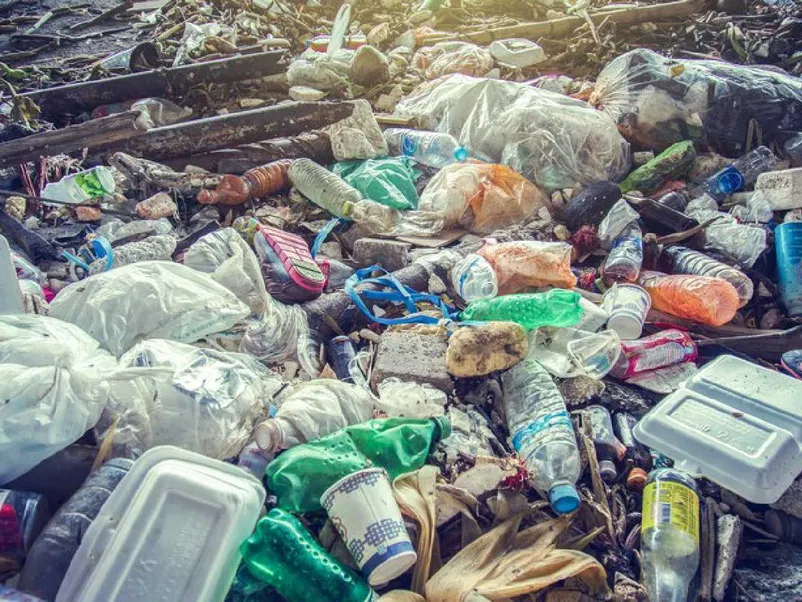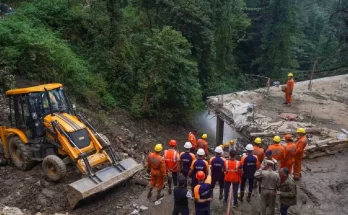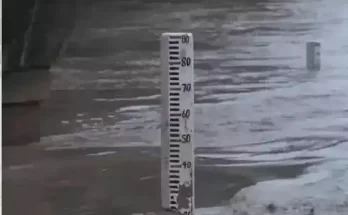Per capita plastic waste generation has almost doubled in India, reveals CSE report ahead of World Environment Day.

Photo for representational purpose only (Credit: Twitter)
About 32% of municipal solid waste remains unaccounted for across India, even as 71% of legacy waste remains unattended ahead of the 2024 target of completely remediating it, reveals a new report. Six of the 10 states with the highest unaccounted waste are in east and north-east India. As many as 11 states, including six from the Northeast, have not even started treating their legacy waste.
These alarming figures were shared ahead of World Environment Day by the environmental advocacy not-for-profit organisation Centre for Science and Environment (CSE) through ‘The State of India’s Environment 2023: In Figures.’
The World Environment Day is observed on June 5 each year. This year’s campaign #BeatPlasticPollution calls for global solutions to combat the plastic menace.
The Central Pollution Control Board (CPCB) data shows that plastic waste generation during the year 2019-20 across 35 states and Union Territories was estimated at approximately 34.69 lakh tonnes per annum (TPA). The per capita plastic waste generation has almost doubled over the last five years. The maximum quantity of plastic waste is generated in Maharashtra (13%), followed by Tamil Nadu and Punjab (12% each).
Of the total solid waste generated for 2019-2020, the share of plastic waste was just 6.30%. However, experts warn that any percentage of plastic is harmful to the planet as it remains on land for thousands of years and, upon reaching water bodies, causes massive marine pollution and hurts marine biodiversity.
As per the CPCB data for 2020-21, the total quantity of solid waste generated in India was 1.6 lakh tonnes per day (TPD), of which 1.52 lakh TPD of waste was collected. As much as 79,956.3 TPD (50%) of waste was treated and 29,427.2 (18.4%) TPD goes into landfills. The remaining 31.7% (rounded off to 32%) of the waste generated remains unaccounted for.
This is a rise from 2019-2020, when the share of unaccounted solid waste was 25.8%.
“The data shows that the government does not know where this 32% waste goes. It is clear that this is the solid waste that ends up choking the drains of our cities or is burnt illegally,” the CSE report stated.
In July 2022, when India banned single-use plastics, the CPCB had rolled out a mobile application called SUP-CPCB that allows citizens to complain about illegal plastic sale and use. Data compiled by the CSE showed that the app received complaints from 138 cities. However, 81 cities failed to redress even a single complaint.
“The only positive is that today, as much as 50% municipal solid waste is being treated as compared to a mere 19% in 2015-16,” said Rajit Sengupta, one of the lead analysts and authors of the CSE report.
“The State of India’s Environment 2023: In Figures is our attempt to use the best available data points to tell you the story of India’s environmental performance: where it has faltered, where it has managed to move towards a sustainable existence, and where, if any, are the gaps in data,” said Sunita Narain, CSE’s director general.
In this report, the CSE has for the first time analysed and ranked the performance of India’s states on four key parameters: overall environmental performance, agriculture, public health, as well as public infrastructure and human development.
Incidentally, the second session of the Intergovernmental Negotiating Committee (INC) to develop a legally binding, international instrument on plastic pollution, including the marine environment, concluded on June 3. Soon after, Inger Andersen, Executive Director of the UN Environment Programme (UNEP), stated: “Plastic has been the default option in design for too long. It is time to redesign products to use less plastic, particularly unnecessary and problematic plastics, to redesign product packaging and shipping to use less plastic, to redesign systems and products for reuse and recyclability, and to redesign the broader system for justice.”
(This story first appeared on news9live.com on Jun 06, 2023 and can be read here.)



